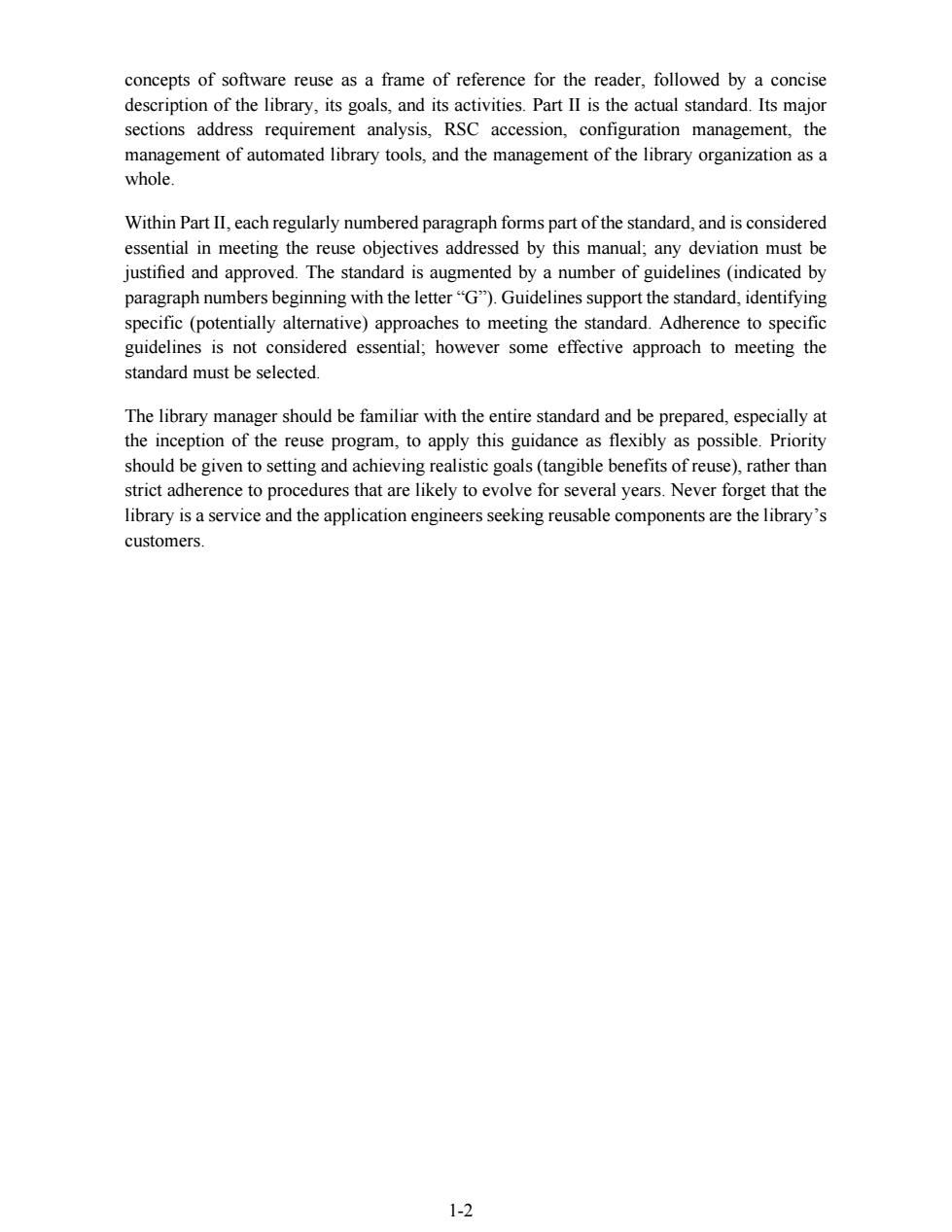正在加载图片...

concepts of software reuse as a frame of reference for the reader,followed by a concise description of the library,its goals,and its activities.Part II is the actual standard.Its major sections address requirement analysis,RSC accession,configuration management,the management of automated library tools,and the management of the library organization as a whole. Within Part I,each regularly numbered paragraph forms part of the standard,and is considered essential in meeting the reuse objectives addressed by this manual:any deviation must be justified and approved.The standard is augmented by a number of guidelines(indicated by paragraph numbers beginning with the letter"G").Guidelines support the standard,identifying specific (potentially alternative)approaches to meeting the standard.Adherence to specific guidelines is not considered essential;however some effective approach to meeting the standard must be selected. The library manager should be familiar with the entire standard and be prepared,especially at the inception of the reuse program,to apply this guidance as flexibly as possible.Priority should be given to setting and achieving realistic goals(tangible benefits of reuse).rather than strict adherence to procedures that are likely to evolve for several years.Never forget that the library is a service and the application engineers seeking reusable components are the library's customers. 1-21-2 concepts of software reuse as a frame of reference for the reader, followed by a concise description of the library, its goals, and its activities. Part II is the actual standard. Its major sections address requirement analysis, RSC accession, configuration management, the management of automated library tools, and the management of the library organization as a whole. Within Part II, each regularly numbered paragraph forms part of the standard, and is considered essential in meeting the reuse objectives addressed by this manual; any deviation must be justified and approved. The standard is augmented by a number of guidelines (indicated by paragraph numbers beginning with the letter “G”). Guidelines support the standard, identifying specific (potentially alternative) approaches to meeting the standard. Adherence to specific guidelines is not considered essential; however some effective approach to meeting the standard must be selected. The library manager should be familiar with the entire standard and be prepared, especially at the inception of the reuse program, to apply this guidance as flexibly as possible. Priority should be given to setting and achieving realistic goals (tangible benefits of reuse), rather than strict adherence to procedures that are likely to evolve for several years. Never forget that the library is a service and the application engineers seeking reusable components are the library’s customers